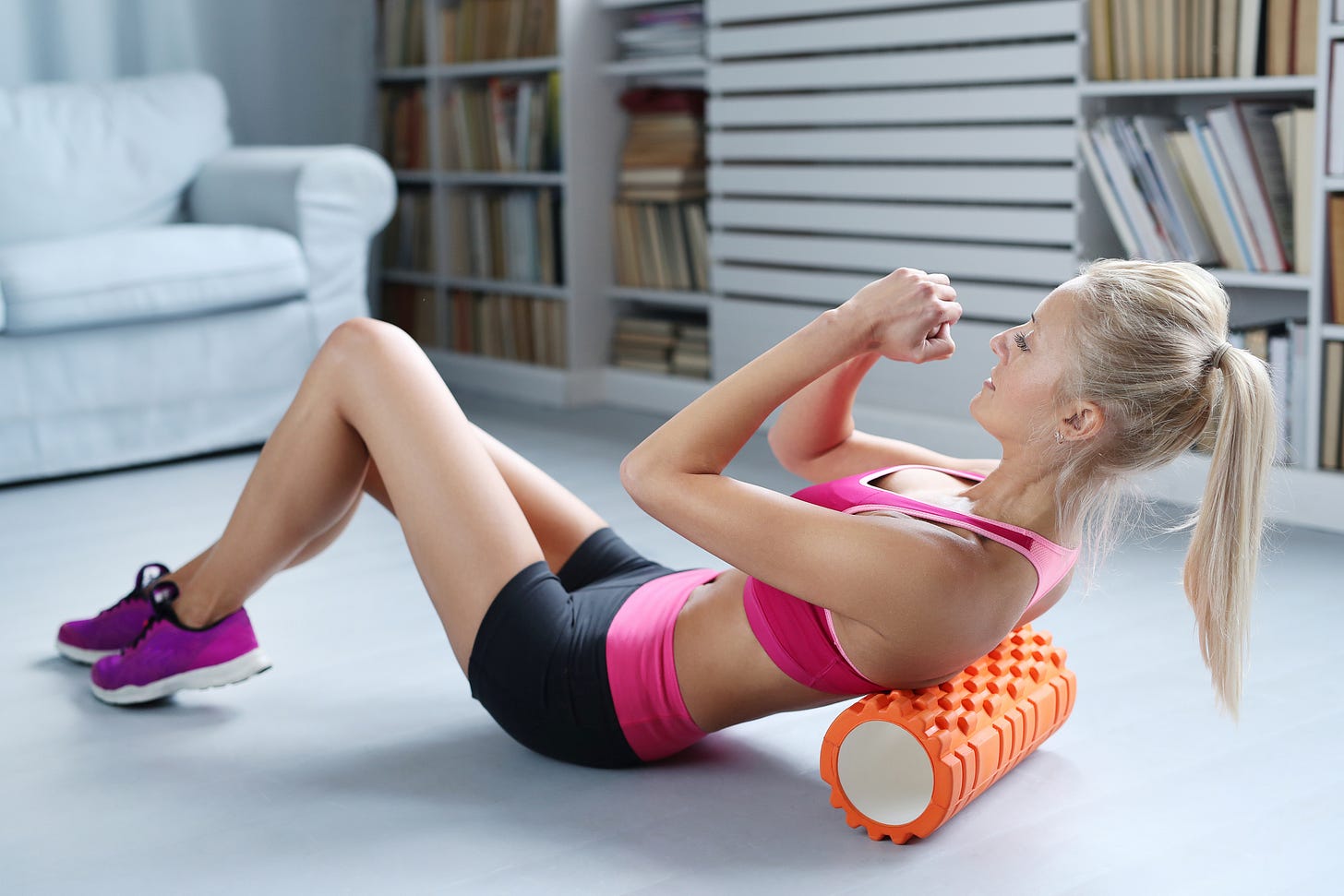Foam Rolling: The Benefits Self-Myofascial Release
Have you ever noticed that foam cylinder in the corner of your gym that nobody seems to touch? There are some underrated benefits to be had by using this foam roller for self-myofascial release.
The fascia is fibrous tissue that surrounds muscles, muscle groups, blood vessels and nerves. Self-myofascial release targets the tissue surrounding muscles/muscle groups.
Some of the benefits of self-myofascial release include correcting muscle imbalances (helps with posture), relaxing tight muscles, improving your range of motion, improving neuromuscular efficiency, reducing muscle pain, and more.
For long-term benefits, self-myofascial release helps prevent future injuries by helping shortened muscles stay lengthened, avoiding what is known as the “cumulative injury cycle,” which is an injury that results in inflammation which can lead to adhesions and furthermore to changes in movement patterns/muscular imbalances. An example of an injury caused by muscle imbalance is runner’s knee, where the IT band often becomes tightened in frequent runners and can lead to injury. In fact, the IT band is usually one of more sensitive areas to foam roll for many people.
As a certified personal trainer (NASM), the most common mistake I see in the gym and even on Youtube tutorials is rolling back and forth too quickly. It’s important to stay on a tense spot for 30-90 seconds to allow for the Golgi Tendon Organ to override the muscle spindle, which helps loosen “knots” in your body. The drawback is that it can feel uncomfortable, comparable to a deep tissue massage, to foam roll. It can be less painful to start with a smooth roller, and the possible “upgrade” later on to rumble roller.
References
Fascia. (n.d.). Physiopedia. Retrieved May 14, 2023, from https://www.physio-pedia.com/Fascia
Martin, M. (2017, May 2). Golgi Tendon Organs and Muscle Spindles Explained. ACE Fitness. Retrieved May 14, 2023, from https://www.acefitness.org/fitness-certifications/ace-answers/exam-preparation-blog/5336/golgi-tendon-organs-and-muscle-spindles-explained/
McCall, P. (n.d.). Using Foam Rollers for Myofascial Release | ACE Blog. ACE Fitness. Retrieved May 14, 2023, from https://www.acefitness.org/continuing-education/certified/december-2016/6163/how-and-when-to-use-foam-rollers-and-myofascial-release-in-an-exercise-program/
Penney, S. (n.d.). Foam Rolling: Applying the Technique of Myofascial Release | NASM. NASM Blog. Retrieved May 14, 2023, from https://blog.nasm.org/foam-rolling-and-self-myofascial-release
Pfitzer, T. (2021, February 9). Runner´s knee (ITBS) | causes & treatment. Blackroll. Retrieved May 14, 2023, from https://blackroll.com/article/runners-knee-itbs
The Science Behind Foam Rolling | O2 Fitness Clubs. (2013, November 29). O2 Fitness Clubs and Gym. Retrieved May 14, 2023, from https://blog.o2fitnessclubs.com/the-science-behind-foam-rolling
Why YOU Should Be Foam Rolling. (n.d.). SportsMed Physical Therapy. Retrieved May 14, 2023, from https://spineandsportsmed.com/foam-rolling/
Image by Racool_studio on Freepik




